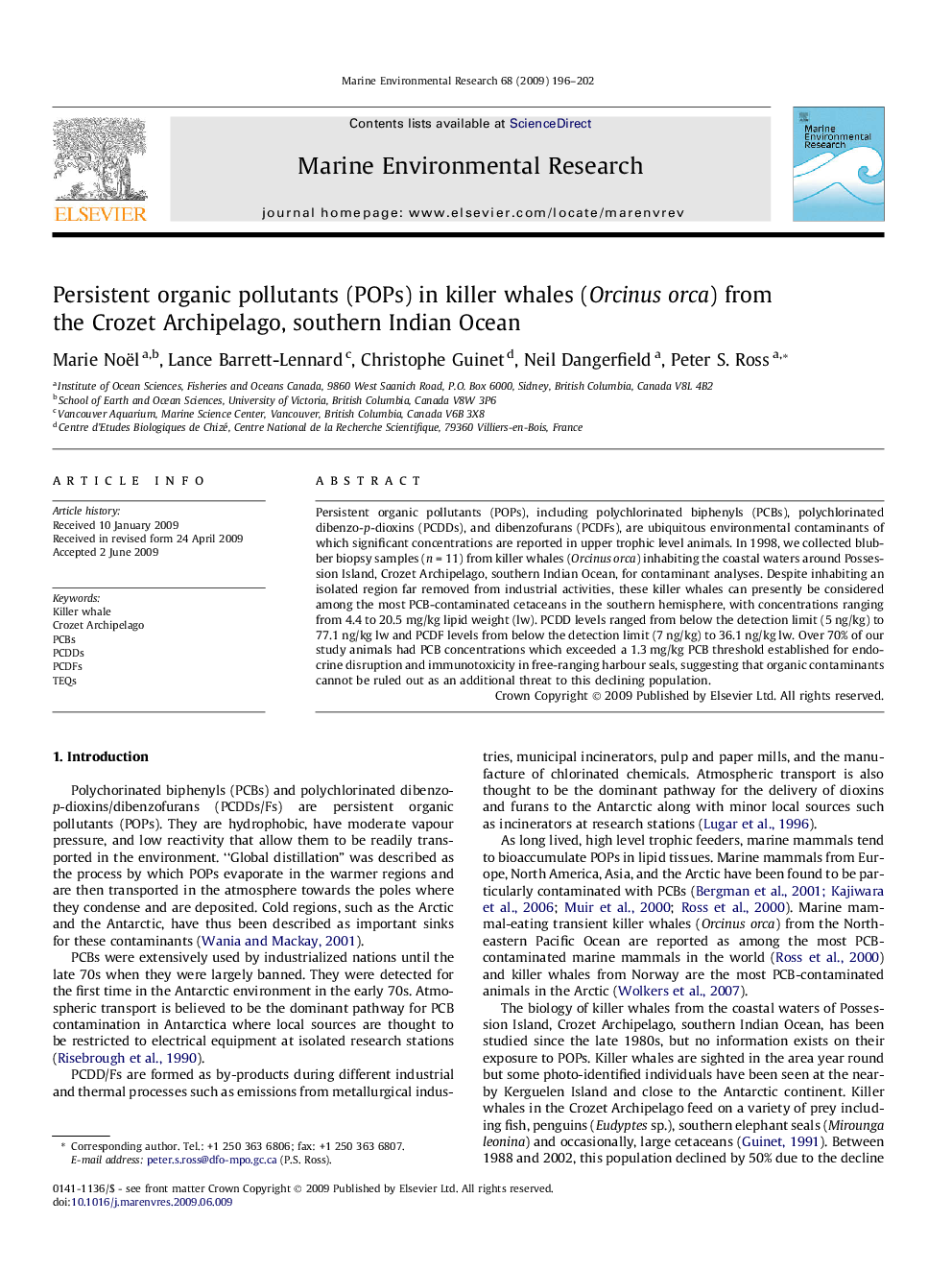| Article ID | Journal | Published Year | Pages | File Type |
|---|---|---|---|---|
| 4551312 | Marine Environmental Research | 2009 | 7 Pages |
Persistent organic pollutants (POPs), including polychlorinated biphenyls (PCBs), polychlorinated dibenzo-p-dioxins (PCDDs), and dibenzofurans (PCDFs), are ubiquitous environmental contaminants of which significant concentrations are reported in upper trophic level animals. In 1998, we collected blubber biopsy samples (n = 11) from killer whales (Orcinus orca) inhabiting the coastal waters around Possession Island, Crozet Archipelago, southern Indian Ocean, for contaminant analyses. Despite inhabiting an isolated region far removed from industrial activities, these killer whales can presently be considered among the most PCB-contaminated cetaceans in the southern hemisphere, with concentrations ranging from 4.4 to 20.5 mg/kg lipid weight (lw). PCDD levels ranged from below the detection limit (5 ng/kg) to 77.1 ng/kg lw and PCDF levels from below the detection limit (7 ng/kg) to 36.1 ng/kg lw. Over 70% of our study animals had PCB concentrations which exceeded a 1.3 mg/kg PCB threshold established for endocrine disruption and immunotoxicity in free-ranging harbour seals, suggesting that organic contaminants cannot be ruled out as an additional threat to this declining population.
